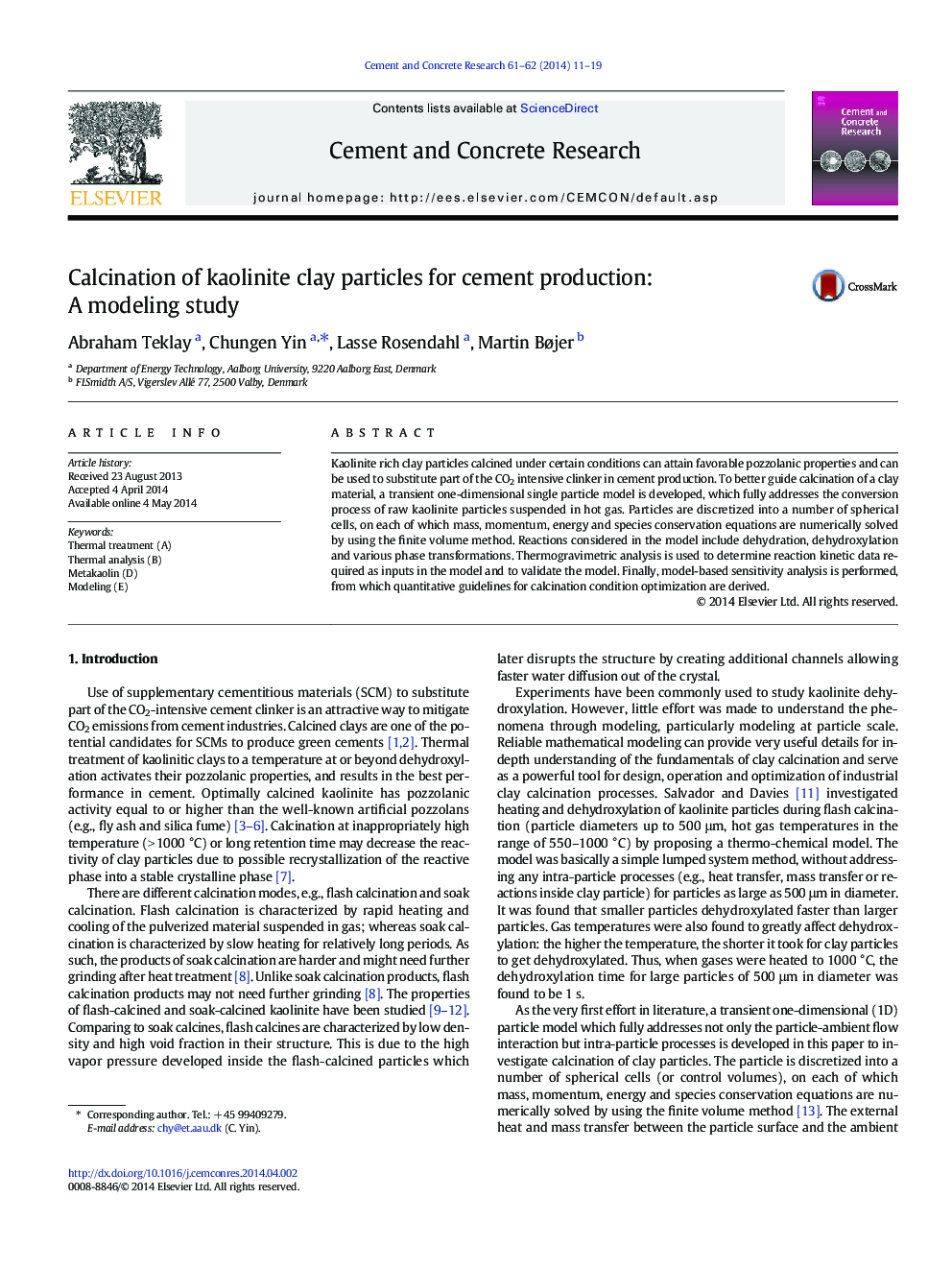| Article ID | Journal | Published Year | Pages | File Type |
|---|---|---|---|---|
| 1456308 | Cement and Concrete Research | 2014 | 9 Pages |
•A general 1D mathematical model for single clay particle calcination is developed.•The model fully addresses momentum, heat and mass transfer and all the reactions.•Experiments are performed to determine kinetic data of the key reactions.•The model is verified by different means, including experimental results.•Sensitivity study is done to address key assumptions and derive useful guidelines.
Kaolinite rich clay particles calcined under certain conditions can attain favorable pozzolanic properties and can be used to substitute part of the CO2 intensive clinker in cement production. To better guide calcination of a clay material, a transient one-dimensional single particle model is developed, which fully addresses the conversion process of raw kaolinite particles suspended in hot gas. Particles are discretized into a number of spherical cells, on each of which mass, momentum, energy and species conservation equations are numerically solved by using the finite volume method. Reactions considered in the model include dehydration, dehydroxylation and various phase transformations. Thermogravimetric analysis is used to determine reaction kinetic data required as inputs in the model and to validate the model. Finally, model-based sensitivity analysis is performed, from which quantitative guidelines for calcination condition optimization are derived.
